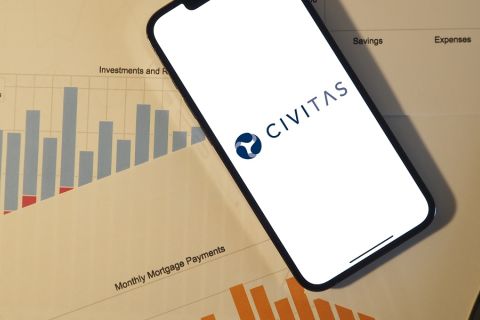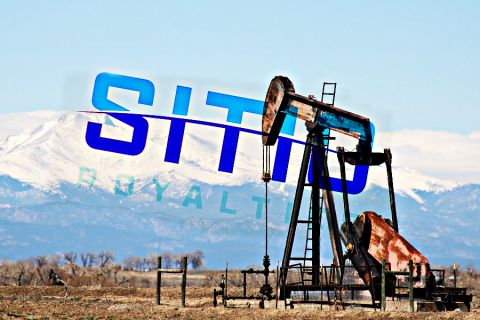
The federal government’s Justice40 Initiative aims to direct 40% of certain investments to disadvantaged communities that are marginalized, underserved and overburdened by pollution. Areas targeted include clean energy, energy efficiency plus remediation and reduction of legacy pollution. (Source: Shutterstock.com)
Efforts are underway in both the public and private sectors to ensure that everyone has access to clean and affordable energy as the world transitions to a low-carbon economy.
“We need to recognize that there are systems that have been built up throughout this country that are inequitable,” said Yasmin Yacoby, deputy chief of staff for the U.S. Department of Energy’s Office of Economic Impact and Diversity. That has meant some communities—specifically, low-income neighborhoods with predominately black or Hispanic populations—have not had access to the same resources as others. “We need to make sure that we spend more resources in those communities to ensure they, too, have a chance at a fair life.”
The federal government’s Justice40 Initiative aims to direct 40% of certain investments to disadvantaged communities that are marginalized, underserved and overburdened by pollution. Areas targeted include clean energy, energy efficiency plus remediation and reduction of legacy pollution—to name a few. The initiative is unfolding as the U.S. Department of Energy’s Minority Business & Workforce Division works to attract minority businesses and workforce to energy.
“We’re making sure that at least 40% of the benefits are flowing to those disadvantaged communities. We again want to see wealth creation in those communities. We want to see energy democracy. We want to see energy resiliency.”—Yasmin Yacoby, U.S. Department of Energy’s Office of Economic Impact and Diversity
Outside the public realm, Sunnova Energy International Inc., a residential solar company, is striving to ensure all communities have access to solar panels and batteries, while Shell USA Inc. has put a just transition at the forefront of its operations topped by supplier diversity.
Executives from the companies and federal offices spoke recently during a luncheon hosted by ALLY Energy that shed light on the need for a just energy transition. It featured the debut of a documentary with environmental justice experts, highlighting the need for an inclusive transition to a net-zero economy and opportunities today to right decades-old, now obsolete policies of historical redlining and racial segregation laws that pushed some groups into undesirable areas with poor infrastructure and disinvestment.
Such conversations are taking place as the U.S. aims to reach net-zero emissions by 2050 to slow global warming. Leaders are pushing to decarbonize electricity with wind and solar, accelerate rapid deployment of electric vehicles and heat pumps, and prioritize clean fuels like carbon-free hydrogen and sustainable biofuels among other efforts.
‘Pushing the envelope’
Challenges include making the transition affordable for everyone.
It is important to make sure all communities have access, Sunnova Energy CEO John Berger said, referring to the company’s services.
“We’re pushing the envelope on the financing. We’re trying to provide credit where credit has not flowed historically,” Berger said, noting some is done by the company and some will be done by partners.
He added that most people assume lower income means they don’t have access to financing. “That’s actually not true,” he said. However, he admitted there are still some instances where poor credit is a barrier.
“All of this is a catalyst to action. Now we just need to put some heft into it, put a little shoulder into it, really push in and make sure no one is left behind.”—John Berger, Sunnova Energy International
Rising prices are also a factor. “There’s more and more people not being able to pay their bills because natural gas has skyrocketed, coal has skyrocketed, oil skyrocketed. And then there’s more and more cost that goes along with the monopolies, the utilities, they’re passing on to customers, and that’s going to continue.”
Sunnova is searching for partners to lower the credit threshold, Berger said.
The recently passed Inflation Reduction Act (IRA), he said, is a “huge tailwind” along with other incentives. “All of this is a catalyst to action. Now we just need to put some heft into it, put a little shoulder into it, really push in and make sure no one is left behind,” Berger said.
Access for all
However, demand will remain for low-cost hydrocarbons, many agree.
“We say ‘net’ because we believe there will still be a need for some oil and gas in various places,” said Gretchen Watkins, president of Shell USA. “Net means we will offset …those [emissions] in some way through carbon capture or nature-based solutions.”
While the company continues to safely produce hydrocarbons, Watkins said, it is moving toward its net-zero by 2050 emissions goals.
“We’re working very closely with our customers and in working closely with our customers that is where I think that the environmental justice and the transformation justice really meets the road,” Watkins said.
The company’s view on a just transition includes enabling “everyone to have access to clean, low cost, reliable and resilient energy,” she said, noting it has no secret plan on how. “It’s going to take everybody. It’s going to take companies like Shell. It’s going to take all of you. It’s going to take the government. It’s going to take communities. And we want all of those voices at the table.”
“We’re working very closely with our customers and in working closely with our customers that is where I think that the environmental justice and the transformation justice really meets the road.”—Gretchen Watkins, Shell USA
Watkins also spoke about Shell’s commitment to supplier diversity and willingness to partner with historically underrepresented and underutilized businesses. “There are a lot of diverse people out there that either own their own companies or want to,” she said, “and it is our job, I think, to go find those people”—not just hire them or sign a contract, but create partnerships and growth. She recalled how Shell was the first to sign a major contract with Jackson Offshore, a small black-owned offshore service contractor that had only one ship at the time.
“We signed a contract, his first one, and that gave him money to actually go buy his next ship,” she said. “Now he has multiple contracts with multiple big companies like Shell. It shows that it is not a one-time thing. This is a decade after decade after decade partnership, and we are committed to continuing to do that.”
Energy democracy
Diversity in the workforce is also part of a just transition, panelists agreed. Speakers highlighted involvement in after-school programs to encourage interest in energy and efforts to tap the existing workforce.
“You need to relate to people first. If you do not understand solar, wind and our energy system at large, you don’t really care. All you care about is if the lights turn on and the bill is low,” said Shalaya Morissette, chief of the Energy Department’s Minority Business & Workforce Division. “Once you understand that there’s a need for you and that the culture is welcoming, I can get you people, plenty of people.”
Companies should also offer their current employees an opportunity to learn second languages, she said, enabling them to enter communities and communicate effectively. This also includes how quotes for solar panels, for example, are presented. “When you say to me it’s very affordable to go after solar and I get that quote that says it’s 10 grand to put it on my house. That’s not affordable,” she said; however, the cost is more affordable when it’s spread across 10 years.
Yacoby pointed out that the IRA also includes tax credits for installing rooftop solar along with other tax credits for weatherizing homes to make them more energy efficient.
“There is money that’s directly coming to people,” Yacoby said, noting Justice40 applies to the IRA and the Bipartisan Infrastructure Law. “So, we’re making sure that at least 40% of the benefits are flowing to those disadvantaged communities. We again want to see wealth creation in those communities. We want to see energy democracy. We want to see energy resiliency.”
Recommended Reading
Civitas, Prioritizing Permian, Jettisons Non-core Colorado Assets
2024-02-27 - After plowing nearly $7 billion into Permian Basin M&A last year, Civitas Resources is selling off non-core acreage from its legacy position in Colorado as part of a $300 million divestiture goal.
Sitio Royalties Dives Deeper in D-J with $150MM Acquisition
2024-02-29 - Sitio Royalties is deepening its roots in the D-J Basin with a $150 million acquisition—citing regulatory certainty over future development activity in Colorado.
Exxon Shale Exec Details Plans for Pioneer’s Acreage, 4-mile Laterals
2024-05-03 - Exxon Mobil plans to drill longer, more capital efficient wells in the Midland Basin after a major boost from the $60 billion Pioneer Natural Resources acquisition. Data shows that Exxon is a leading operator drilling 4-mile laterals in the Permian’s Delaware Basin.
Permian M&A: Oxy Shops Delaware Assets, Family Oil Cos. Stand Out
2024-05-10 - As operators scour the Permian Basin for M&A opportunities, they’re keeping an eye on a tepid divestiture market. Family-owned oil companies also stand out among the pack of private inventory holders remaining in the Permian, according to Enverus Intelligence Research.
Is Double Eagle IV the Most Coveted PE-backed Permian E&P Left?
2024-04-22 - Double Eagle IV is quietly adding leases and drilling new oil wells in core parts of the Midland Basin. After a historic run of corporate consolidation, is it the most attractive private equity-backed E&P still standing in the Permian Basin?






